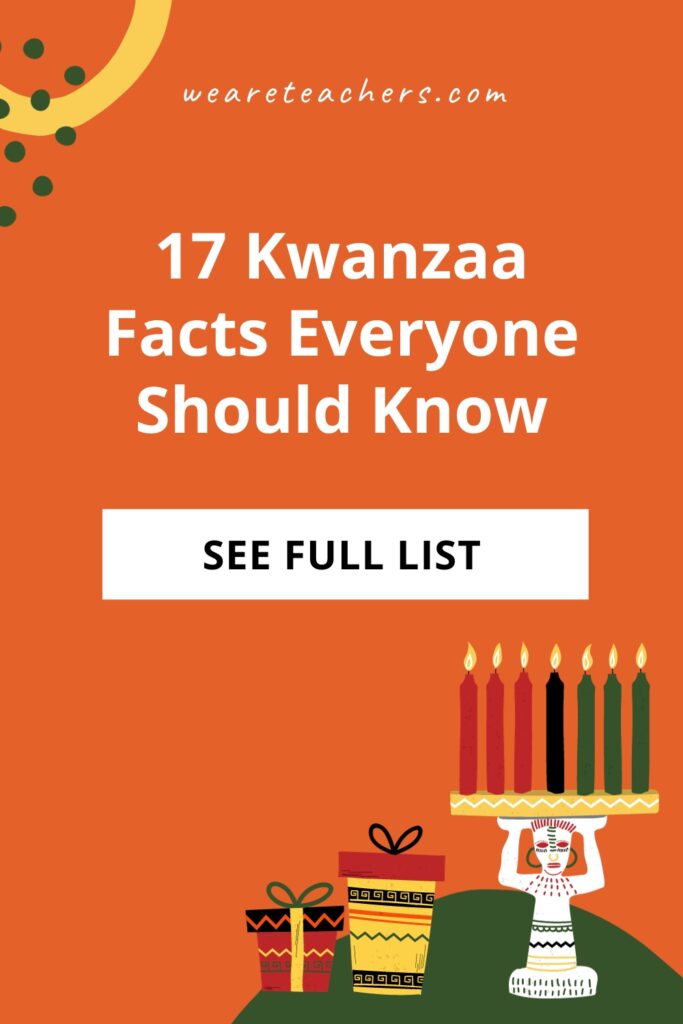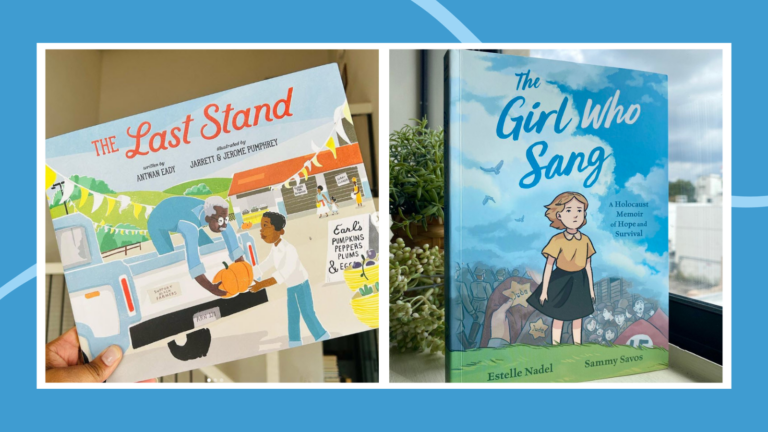Do you know about Kwanzaa? If not, you’re missing out on this beautiful holiday that highlights reflection, unity, and joyful gatherings. Kwanzaa offers a unique opportunity to immerse yourself in the rich tapestry of African American culture and heritage. Kwanzaa begins on December 26 and lasts through January 1. Ready to learn more? Let’s dive into some intriguing Kwanzaa facts, shedding light on its history, customs, and the significance it holds for millions of people worldwide.
Kwanzaa Facts Everyone Should Know
What is Kwanzaa?
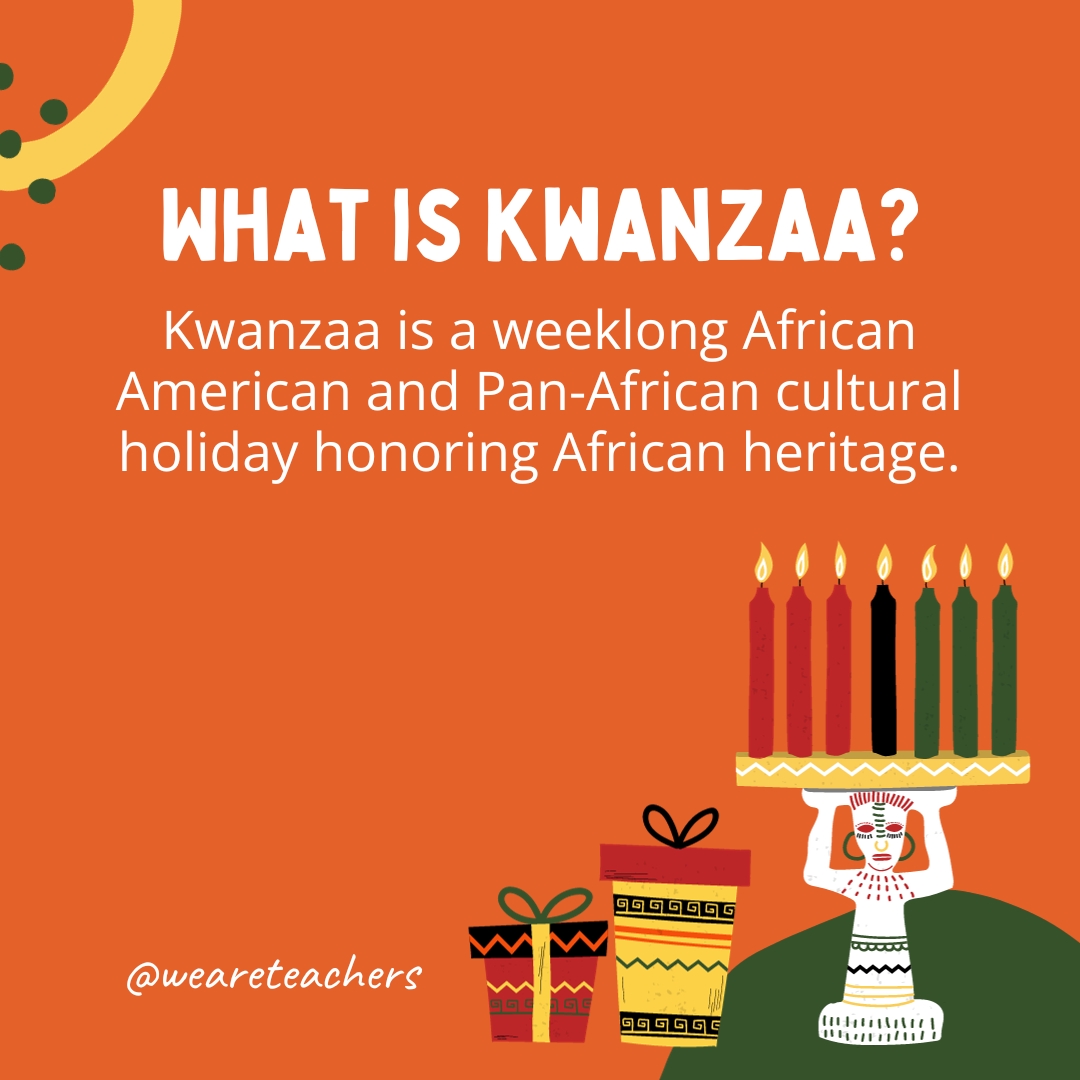
Kwanzaa is a weeklong African American and Pan-African cultural holiday honoring African heritage.
Source: Official Kwanzaa Website
Kwanzaa has been celebrated for almost 60 years.
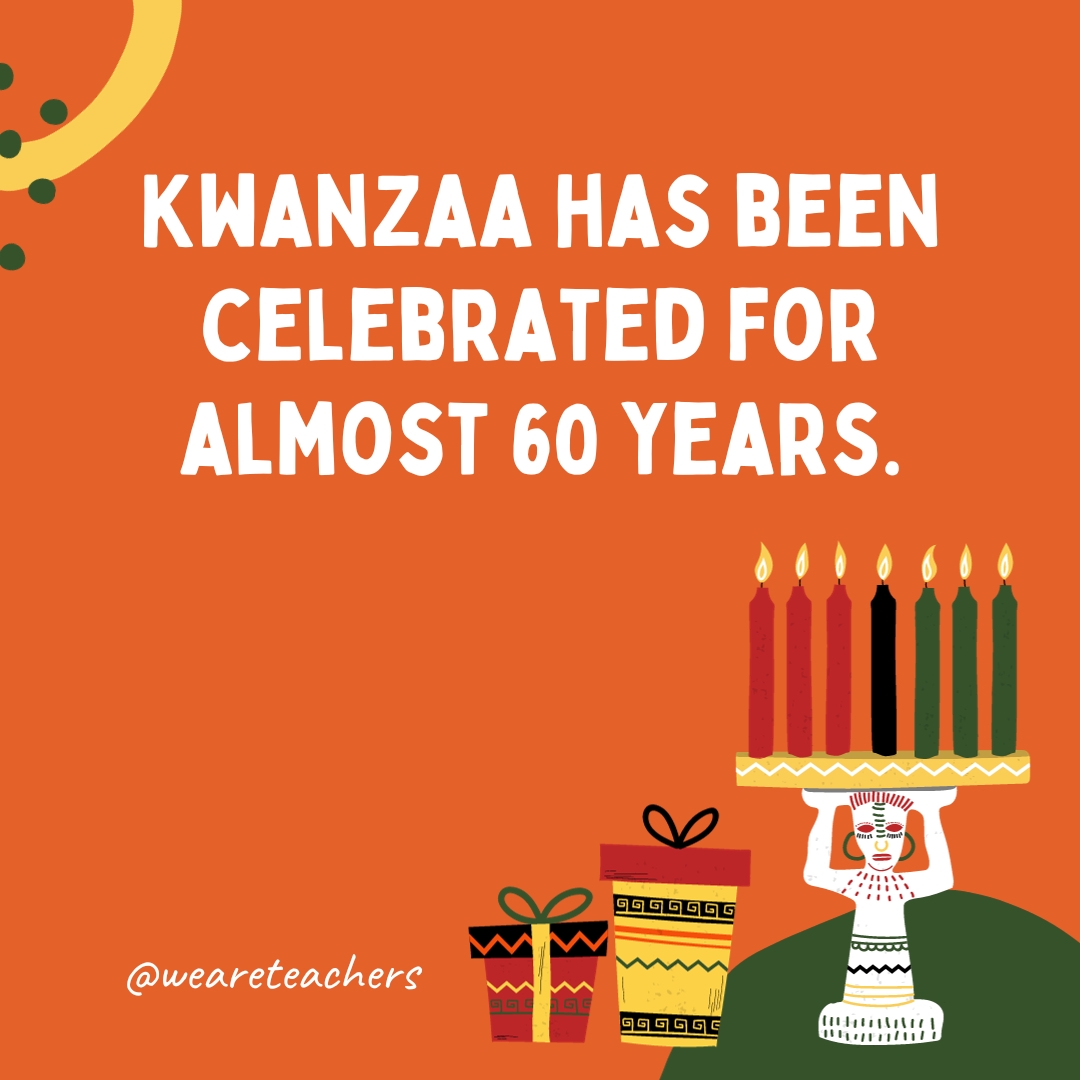
Maulana Karenga founded Kwanzaa in 1966.
Source: National Museum of African American History & Culture at Smithsonian
The word “Kwanzaa” has African roots.

It comes from the Swahili phrase “matunda ya kwanza,” which means “first fruits.”
Source: Kwanzaa at Dictionary.com
Kwanzaa lasts for seven days.
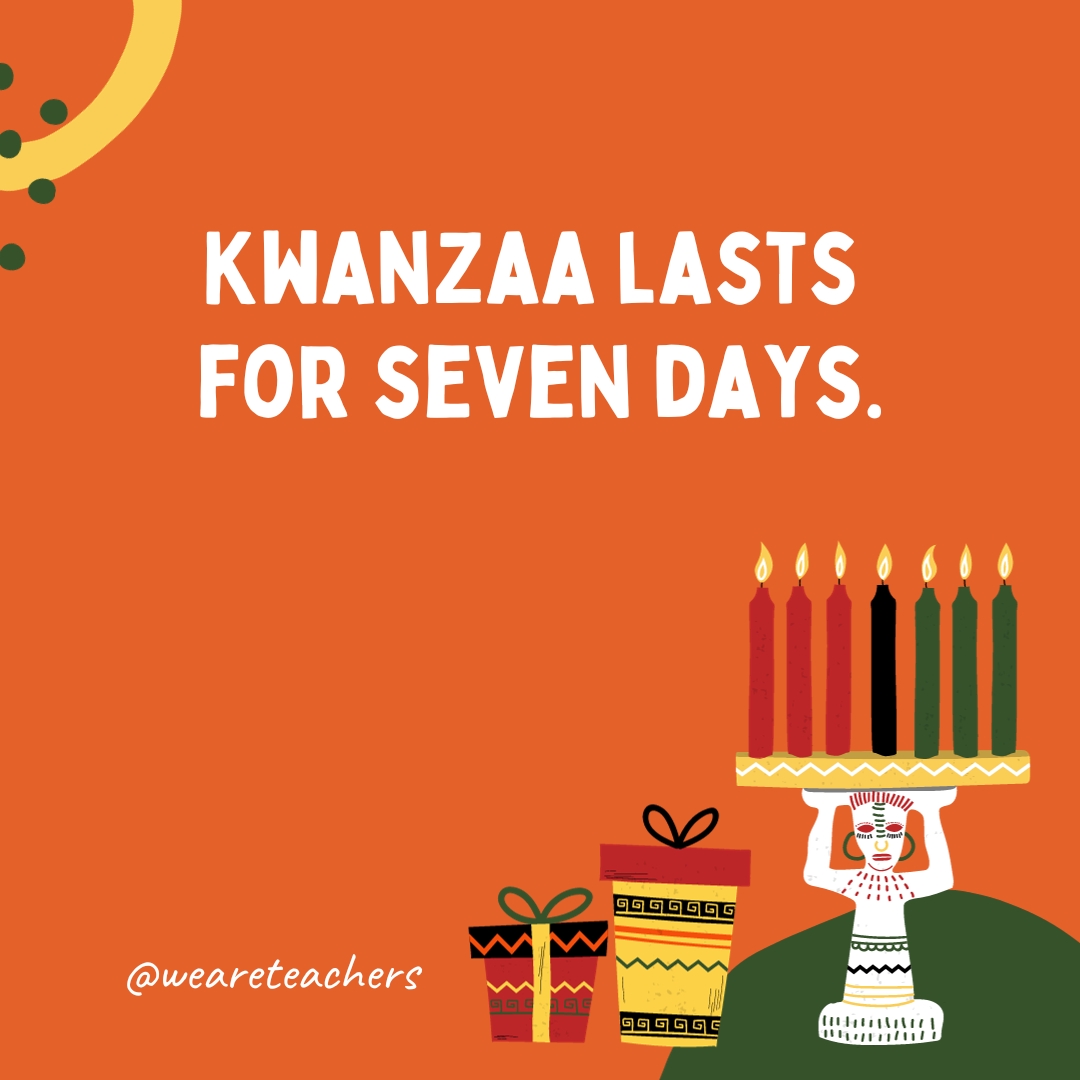
People observe from December 26 to January 1, with each day dedicated to a specific principle or value.
Source: Celebrating Kwanzaa at National Geographic Kids
Kwanzaa is not a religious holiday.
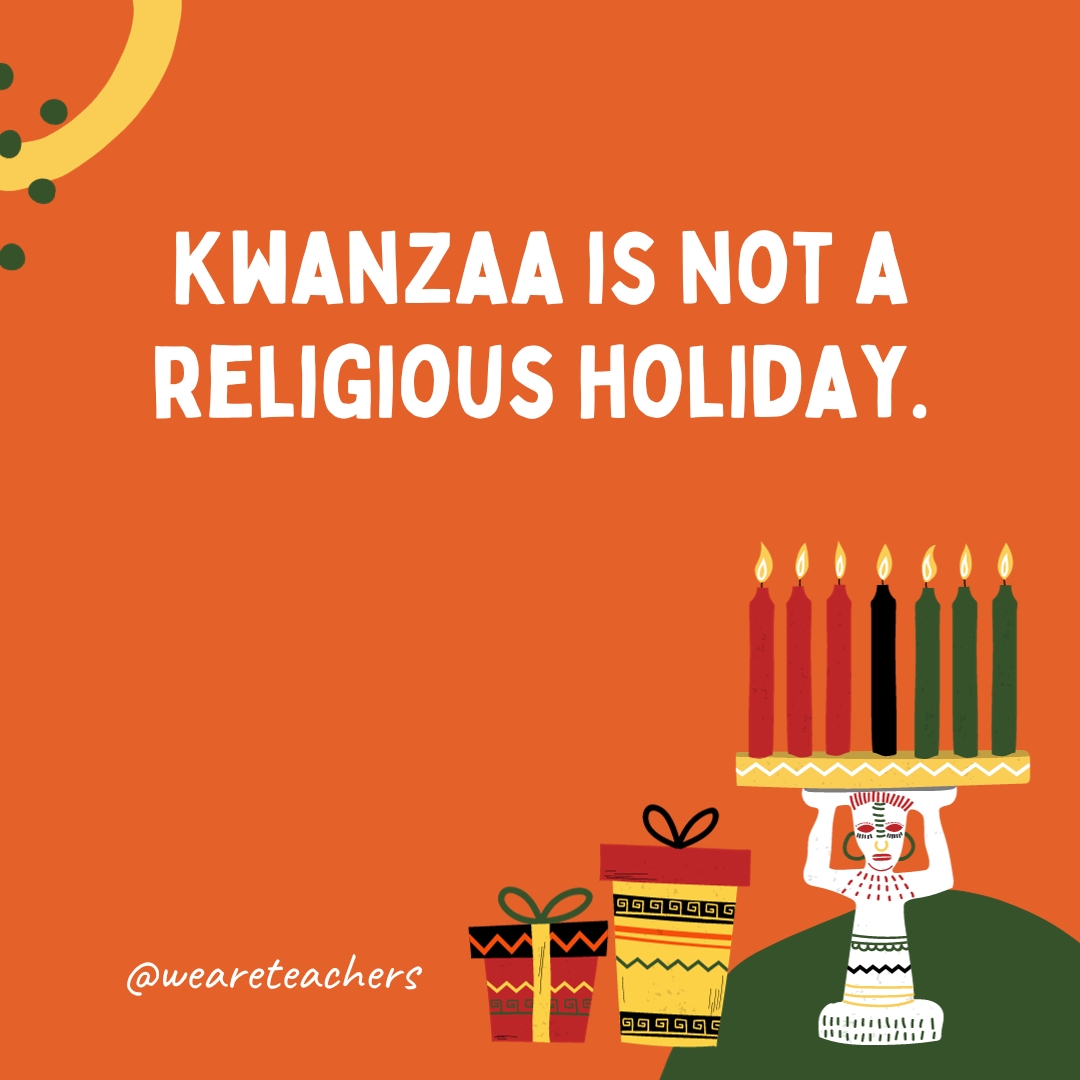
In fact, Kwanzaa is considered a cultural holiday with “an inherent spiritual quality.”
Source: Kwanzaa at Britannica
Kwanzaa is based on seven principles.

The seven principles are known as Nguzo Saba. They are Umoja (unity), Kujichagulia (self-determination), Ujima (collective work and responsibility), Ujamaa (cooperative economics), Nia (purpose), Kuumba (creativity), and Imani (faith).
Source: University of Pennsylvania’s African Studies Center
The colors of Kwanzaa are red, black, and green.
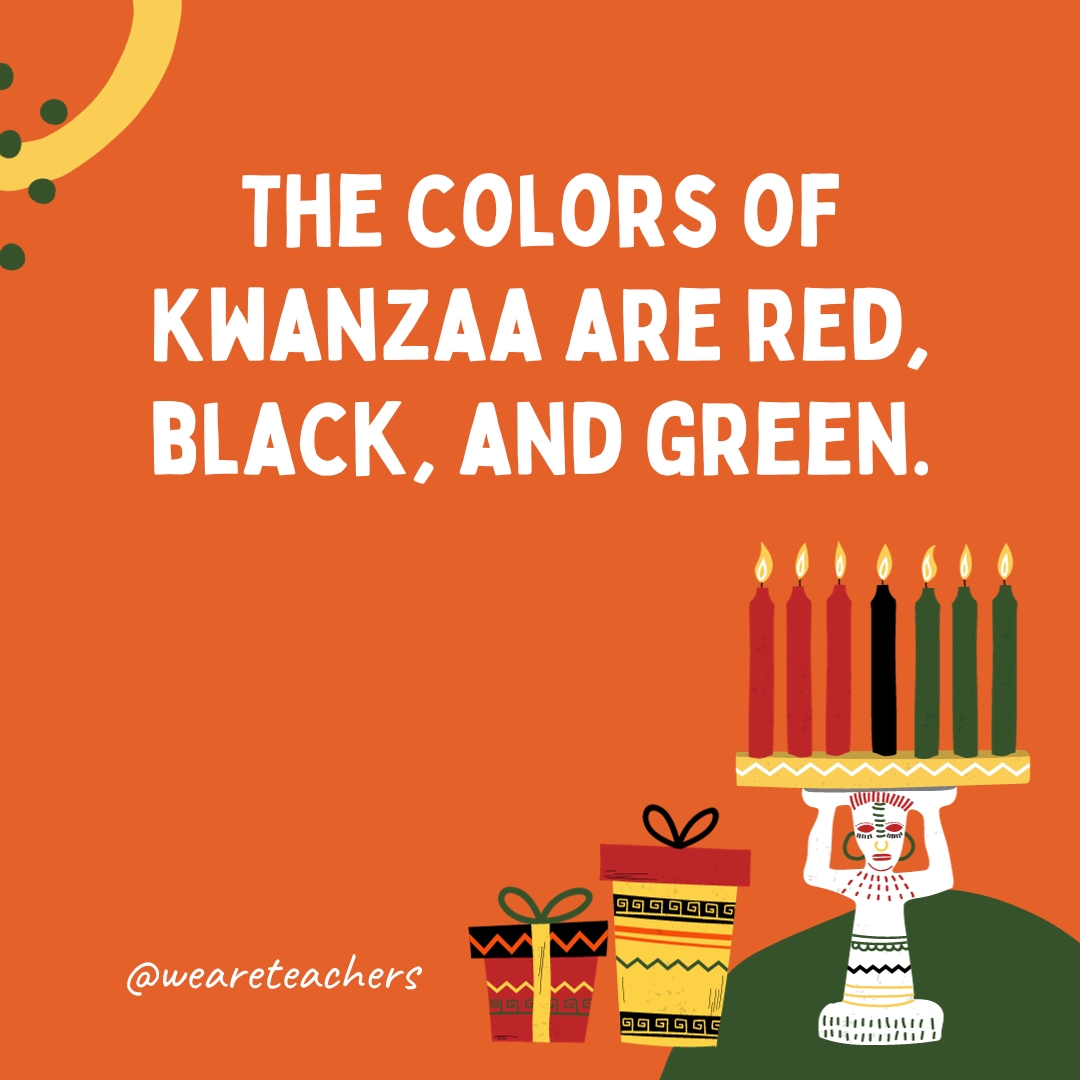
These colors hold symbolic significance: red for the struggle of the African people, black for the people, and green for hope and the future.
Source: The Principles and Meaning of Kwanzaa at Oprah Daily
Several traditional items symbolize Kwanzaa.
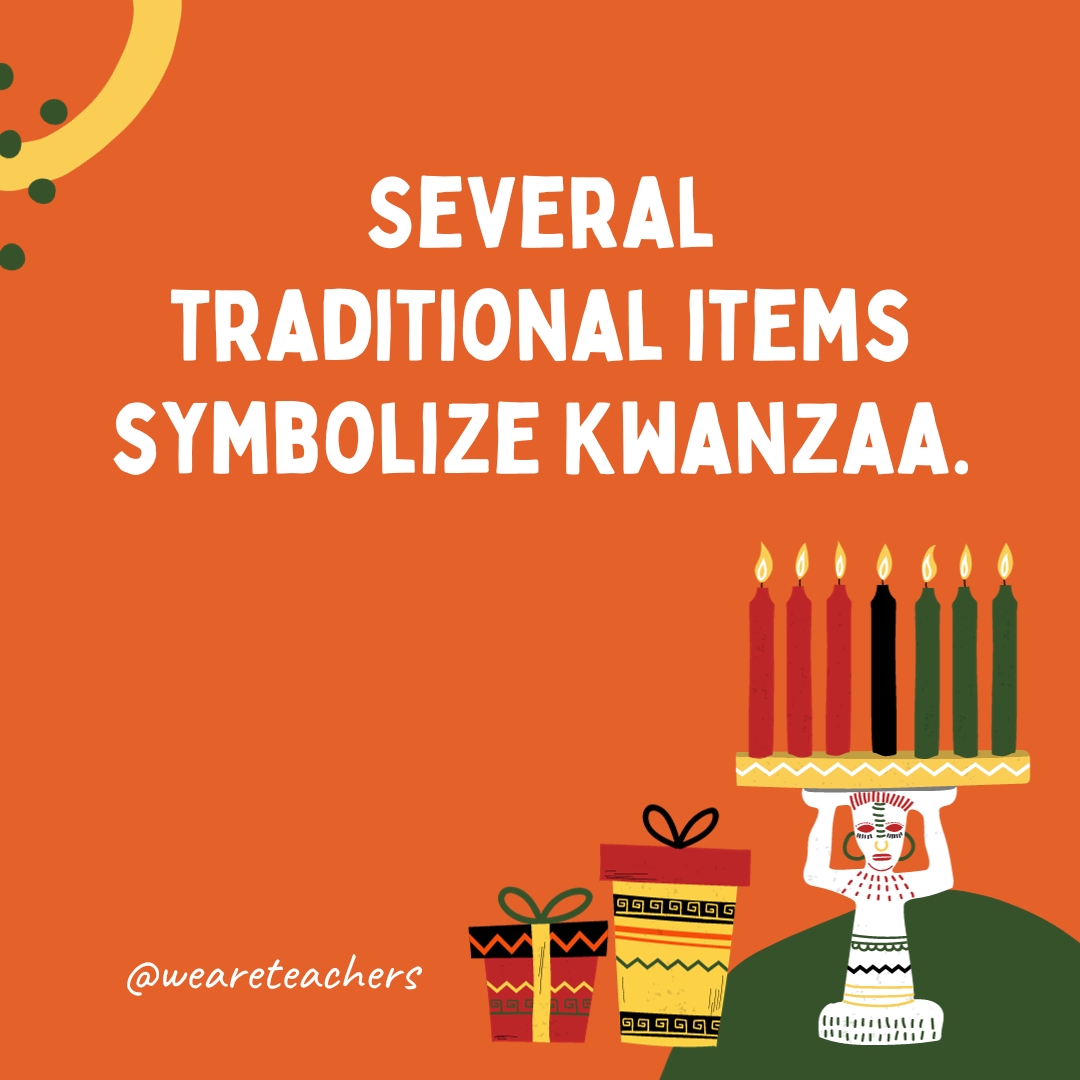
These include the Kinara (a candle holder), Mishumaa Sabaa (seven candles), Kikombe cha Umoja (a unity cup), Mkeka (a mat), Muhindi (corn), and Zawadi (gifts).
Source: Kwanzaa | History, Traditions, Dates, Symbols, & Facts at Britannica; The Principles and Meaning of Kwanzaa at Oprah Daily
People light candles during Kwanzaa.

Each of the seven days of Kwanzaa is dedicated to one of the seven principles. A candle is lit on the Kinara each day to represent that principle.
Source: Lighting the Kinara During Kwanzaa at African American Cultural Center
It is customary to pour libations during Kwanzaa ceremonies.
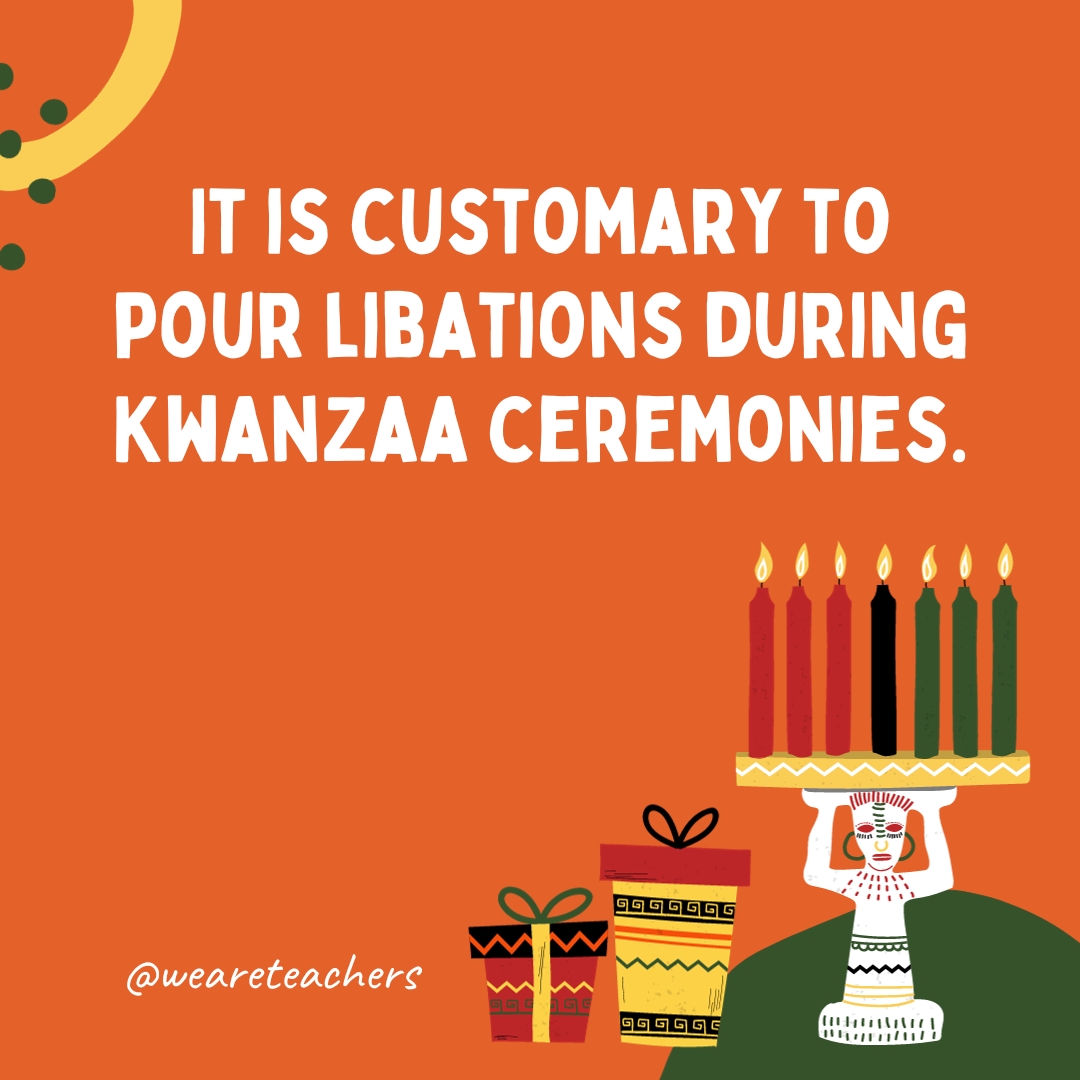
This is a way to remember and honor ancestors. As a gesture of respect, many people pour a few drops of a liquid, such as water or wine.
Source: Karenga-Kwanzaa at University at Buffalo
Kwanzaa emphasizes the importance of family and community.
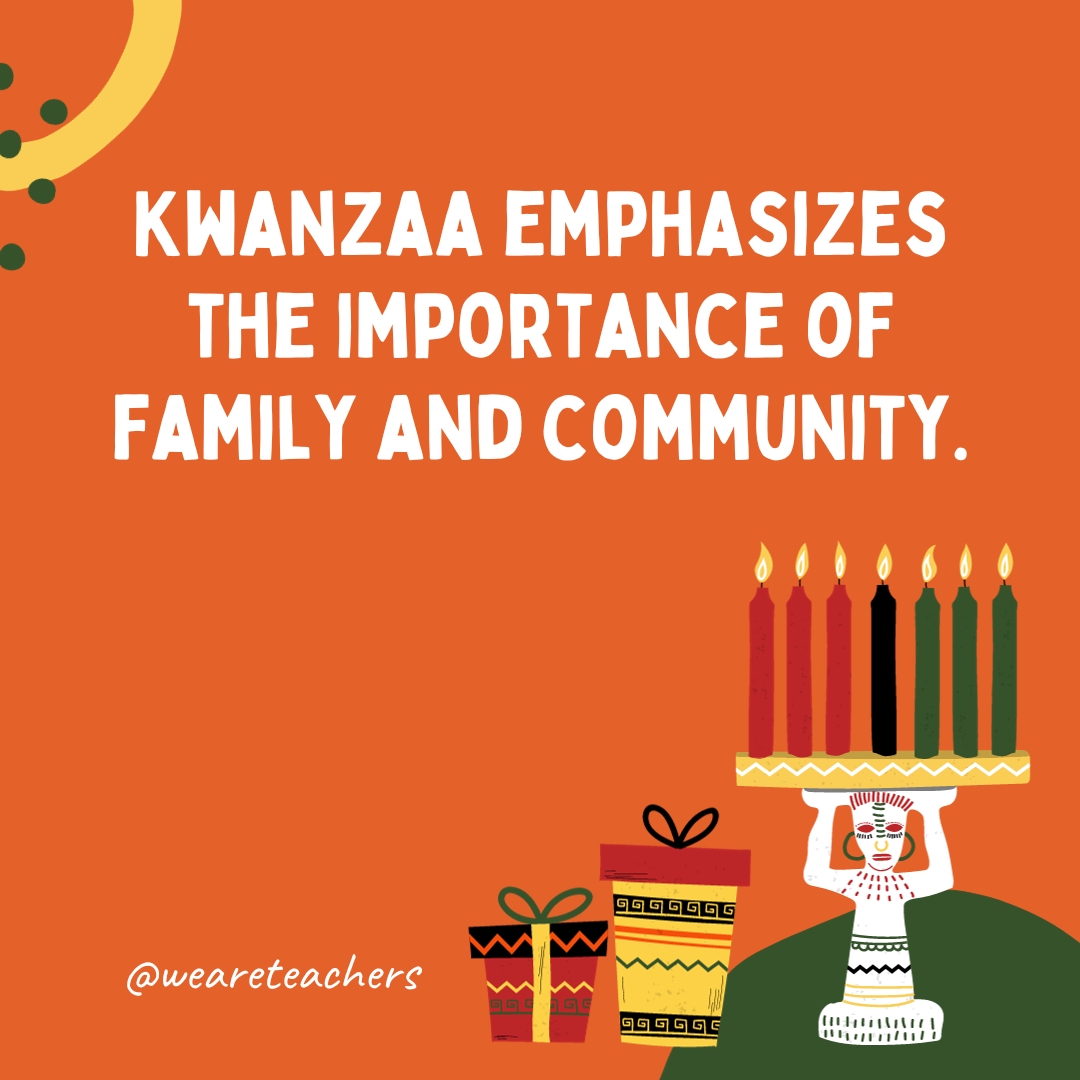
Families come together to celebrate and reflect on their shared values and heritage.
Source: What Is Kwanzaa? at Rosetta Stone
Kwanzaa serves as a time of reflection, renewal, and recommitment.
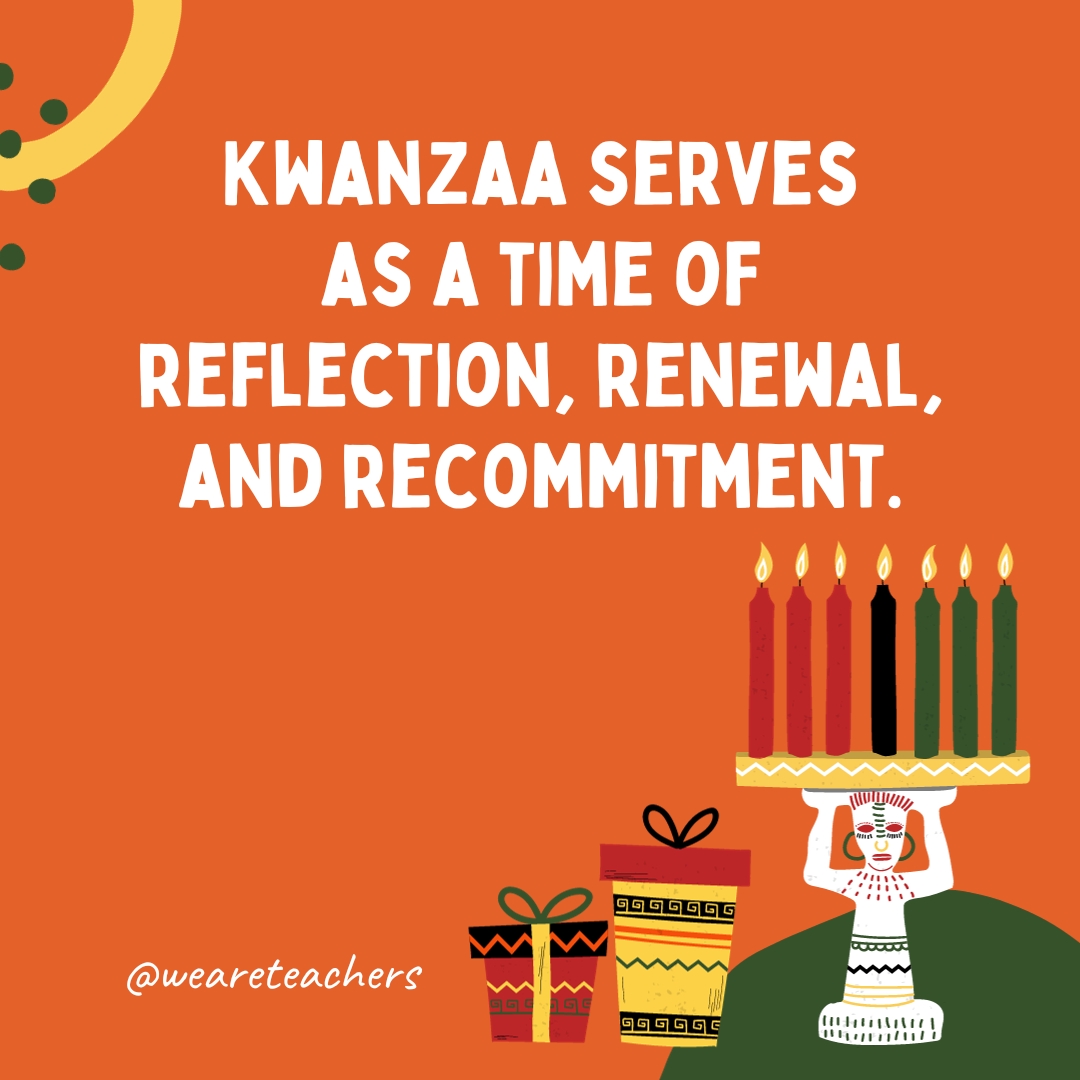
It’s an opportunity to remember the values and principles that it represents, fostering a sense of unity and purpose within the African American community.
Source: Black History Month: The Activist Behind Kwanzaa at California State University Employees Union
There is a special feast on the seventh day of Kwanzaa.

On December 31, families and friends gather to enjoy traditional African foods and music during the Karamu feast.
Source: Karamu: Feast for the 7th Day at PBS (video)
Gift-giving is part of Kwanzaa.
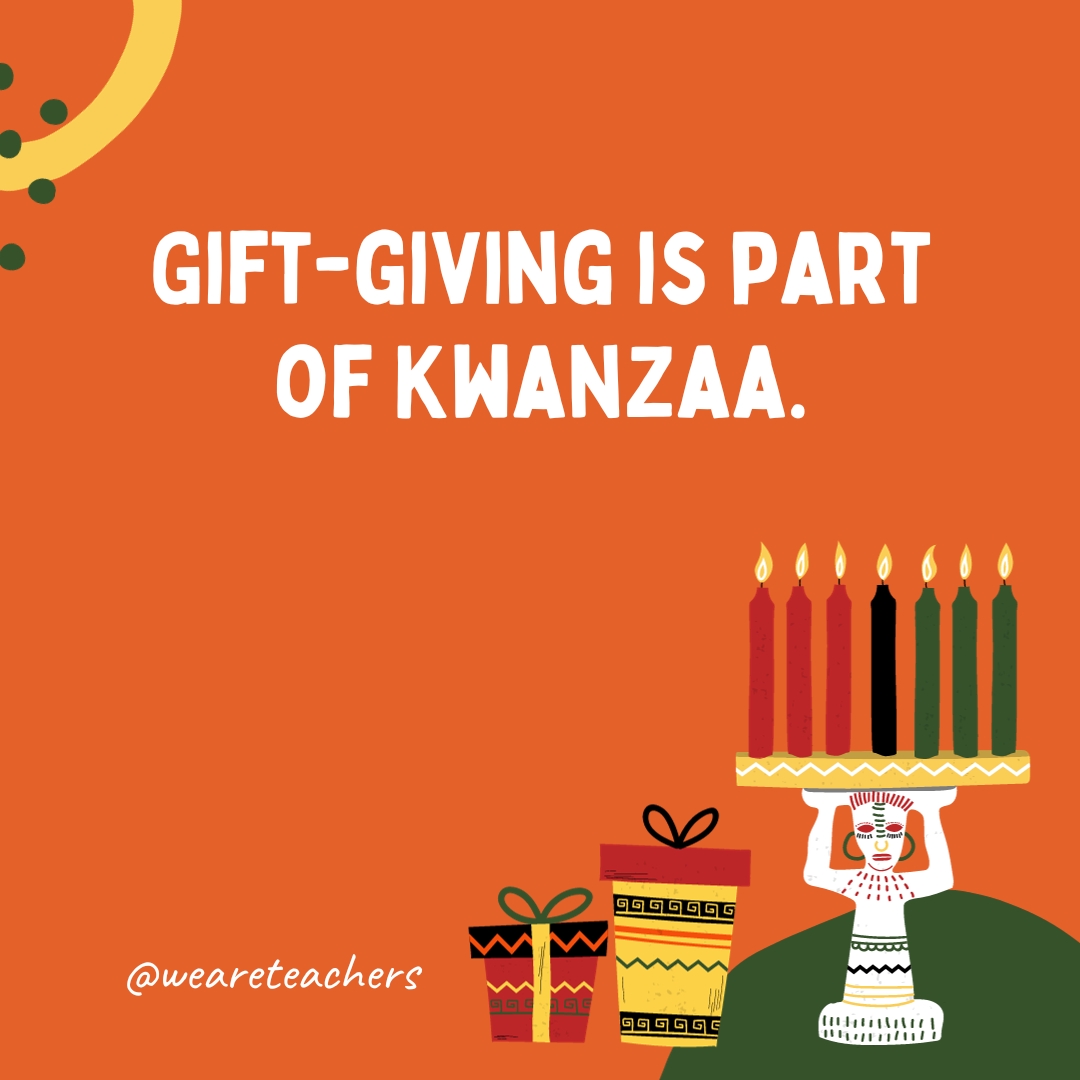
Observers are encouraged to exchange meaningful gifts that promote creativity and personal growth.
Source: The Gift of Holiday Traditions: Kwanzaa, Hanukkah, and Christmas at National Endowment for the Humanities
Kwanzaa celebrations often include African drums, dancing, and storytelling.
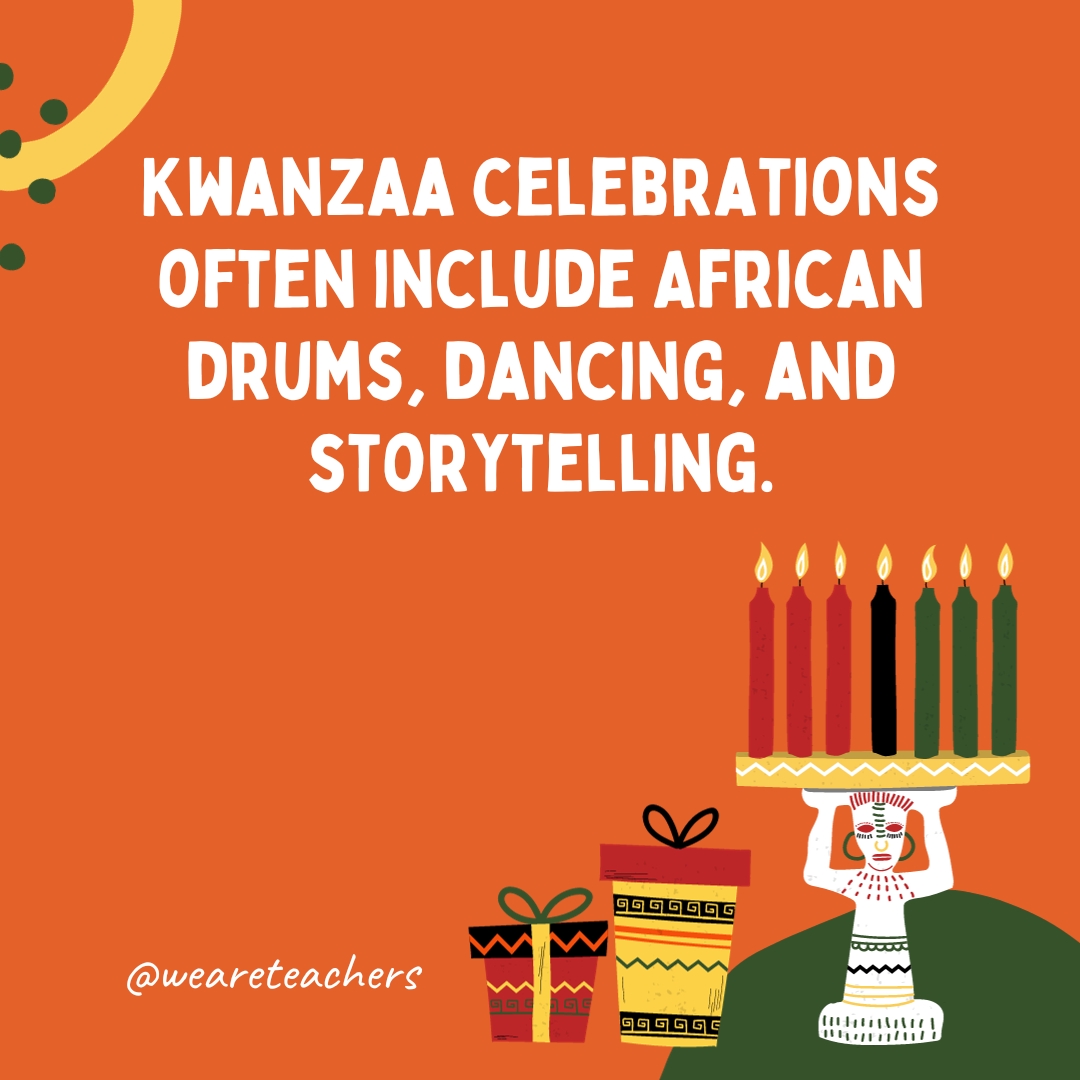
Elders share stories of African history and culture with younger generations.
Source: Kwanzaa Winter Roots Celebration at UNM African American Student Services
Many people celebrate Christmas and Kwanzaa together.

Since Kwanzaa is not a religious holiday, many people celebrate it along with Christmas and Hanukkah.
Source: 5 Things You May Not Know About Kwanzaa at History Channel
Millions of people around the world celebrate Kwanzaa.
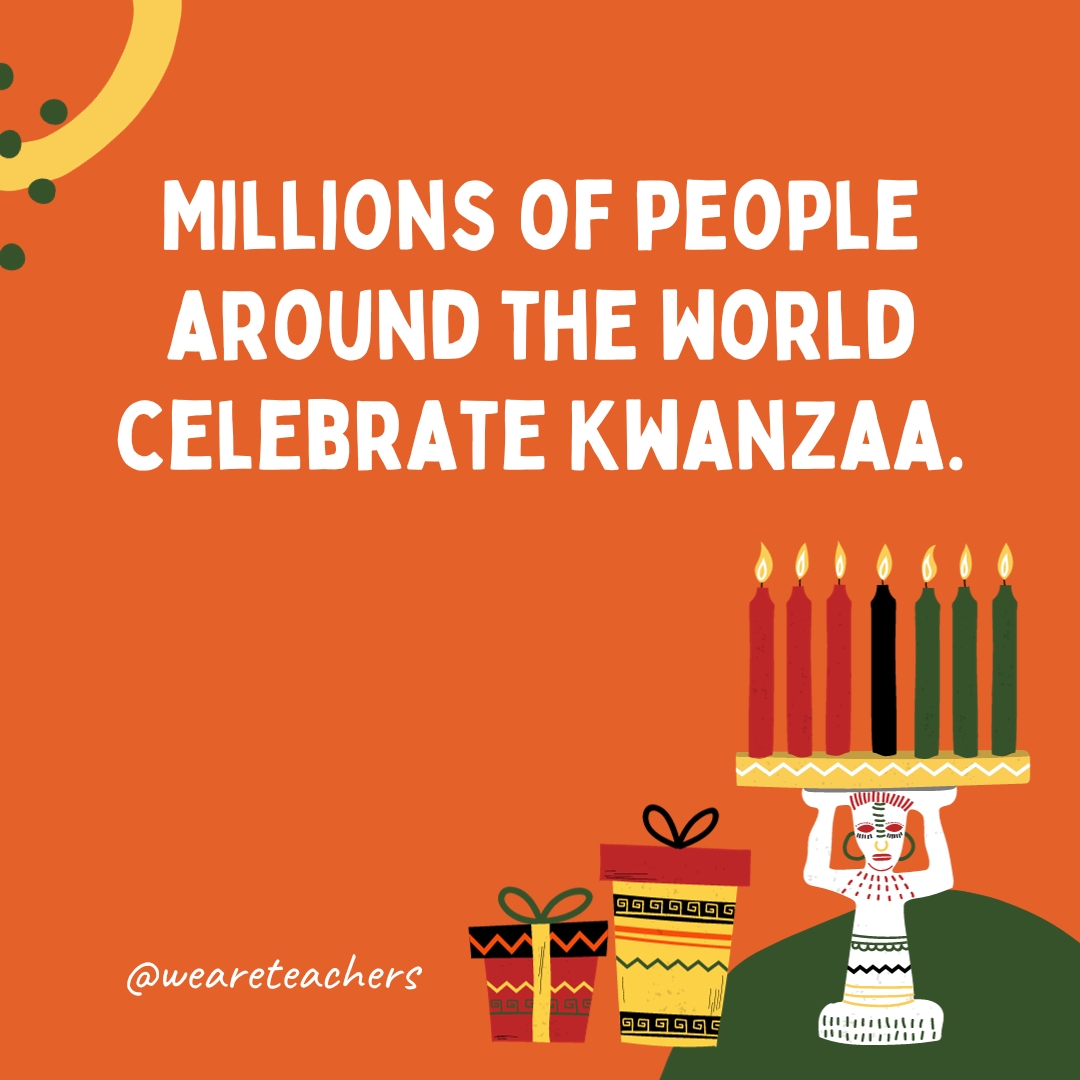
While African Americans most commonly celebrate this holiday, other countries, particularly in the African diaspora, also observe Kwanzaa.
Source: Kwanzaa celebrates African-American heritage at National Geographic
Enjoy these Kwanzaa facts? Check out Our Favorite Kwanzaa, Hanukkah, and Christmas Books for Kids.
For more holiday facts, book lists, and ideas for teachers, sign up for our newsletters.
